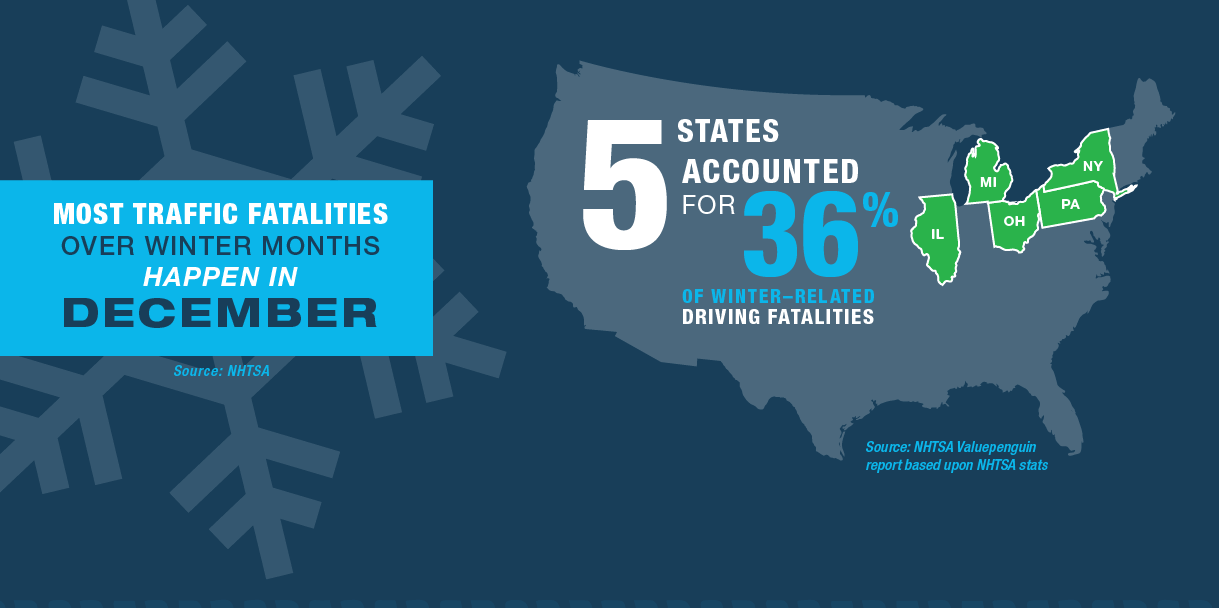
Even though drivers log 20% fewer miles in winter compared to summer, the number of collisions only drops by 5%. Not surprising, right? Bad weather and fewer daylight hours make every road a little more dangerous.
But here’s a stat about winter driving crashes that might raise an eyebrow: snowy, slushy or icy roads account for only 24% of weather-related crashes. Seventy-four percent of weather-related incidents happen on wet roads.
The takeaway? When it’s “just” raining or when snow and ice start to melt, drivers let their guard down. They forget their vehicle may require ten times longer to stop on a wet road versus a dry one.
Download Our FREE Winter Driving Safety Resources Bundle for Fleets Here!
Data-driven insights like these can help busy safety managers decide where to focus their driver training efforts for maximum results.
Winter Crash Statistics: When the Rubber Doesn’t Meet the Road
In winter, one in three collisions occur between 3 p.m. and 9 p.m. You can probably guess why: days are shorter, shifts are longer and fatigued drivers take chances they shouldn’t.
- The National Institute of Health (NIH) reports up to 20% of serious car crashes are caused by drowsy driving (no alcohol involved)
- Missing two to three hours of sleep creates the same impairment as being legally drunk according to a study by AAA
The problem is so big, the National Safety Council runs a drowsy driving prevention campaign every November.
The takeaway? Some drivers think they’re invincible, but they’re not. Use these stats to reinforce the dangers of drowsy driving and tell drivers what they should do when they feel drowsy (pull over and take a break, consume a caffeinated drink, etc.).
Stats Make Fleet Safety Training More Memorable
Facts and figures can boost the effectiveness of your company driver safety program by defining the value of a (safe) behavior. Read the two statements below and ask yourself which one is the most effective:
- Regular tire rotation can extend the life of your tires
- Regular tire rotation can extend the life of your tires by up to 30,000 miles
If you don’t already use statistics about driving in bad weather as part of your fleet driver safety training, click the link below to download our complete package of winter safety resources. It’s packed with impactful statistics, safety tips and checklists, as well as a comprehensive winter safety guide and webinar.
If you found this article helpful, we recommend the following:
5 STEPS to Winter Injury Prevention (Free Poster)
Checklist: How Good Is Your Winter Safety Policy?
Night Driving Tips to Keep Your Fleet Safe This Winter




